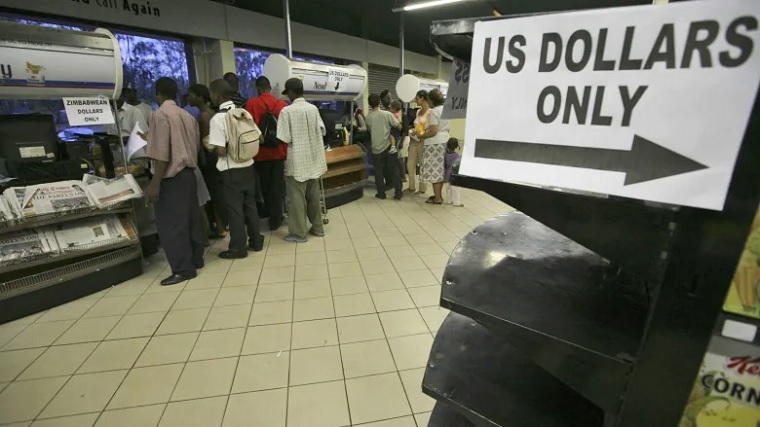The result was dramatic. Billions worth of different currencies poured onto the street, inflation went from world record levels to minus 7 per cent, shops went from empty to being fully stocked with everything we could want. Filling stations which had been dry for years, had full stocks at lower prices. Zimbabwe celebrated. Over the next 4 years, the revenue to Government rose from US$280 million in 2008 to US$4,3 billion in 2013, prices remained stable and we could buy virtually anything we needed on local markets. BUT our own productive economy in agriculture and industry, did not recover. At the start we were importing 90 per cent of what we needed, in 2013 we were still importing 70 per cent of what we needed.
The reason for the collapse of our own dollar in 2008 was quite simple; we had printed the local currency recklessly to cover a huge fiscal deficit and in an attempt to halt the collapse of our economy. We never asked how the Rhodesian regime had maintained their currency at 1 to 2 against the USD despite global sanctions and war before Independence in 1980. It was not magic, just plain old good governance and conservative fiscal policies.
What we all missed from that period was the fact that the local economy did not recover, we did not create jobs and instead we became the supermarket for the region and the world. Cross border smuggling grew massively – where people had previously shopped in neighbouring countries, they now used a runner who could deliver their needs in 48 hours with no VAT or other border charges. The informal sector which had always been a significant player in our economy boomed and the formal sector stagnated. But for the majority of our citizens, it was a Party.
When Mthuli Ncube took over the Ministry of Finance in 2018, he quickly identified a number of problems. Central to this was an unmanageable fiscal deficit and the existence of tens of billions of US dollars that had been printed by the Reserve Bank and now resided in our bank accounts. He created a new currency which he called, rather cleverly, the RTGS Dollar after the banking system that had created it. He separated the two and made them compete in the market. The local dollar crashed and burned, but for three years we saw a remarkable upsurge in local production. We nearly reached self-sufficiency in farm products, local industry expanded, and we were creating thousands of jobs every month. Imports fell below 40 per cent of consumption.
The reason? We had our own currency, which was working, albeit in a rather shambolic way. We started the auction of foreign currency and over 80 per cent of the sales went into raw materials and equipment – expanding local productive sectors. All this progress collapsed when the Reserve Bank failed to manage the auction properly and the market for the local currency disappeared. By 2023 we were back at square 1 and the use of the RTGS dollar was virtually abandoned.
Then the ZIG arrived. We had been there before and the dominating sentiment was ‘here we go again’. Today the RBZ strives to force everyone to trade the local ZIG at 14.5 to 1 against the USD. 500 businesses have been fined or worse for violations. The informal sector, which is now half the economy, walks into stores, buys what they want at 14.5 to 1, walks out the door and sells it for USD in a market awash with USD cash, sells the USD for 22 to 1 and return to restock. The retailer sits with millions of ZIG in his accounts which no one will accept because they need hard currency to service their own demands. Our formal sector is crashing, job creation has been turned into job destruction, tax revenues are declining.
Recently in a walk about with top Government advisors, we saw basic foods produced here, being sold below cost in the informal market where the streets were crowded with buyers and vehicles. The same products were being sold in our top supermarkets at nearly double the price. Everybody is happy except the unemployed majority and the companies who actually produce something and the formal sector stores.
Continued next page
(410 VIEWS)



Pingback: ZiG payments now account for 40% of transactions- 80% of government trade | The Insider